Now that's a very cool chip... I have thought about building a waveform gen out of this chip for years. It's simple and elegant and does a decent job of making waveforms the old-fashoned analog way. I finally got around to it and here's how that module turned out... 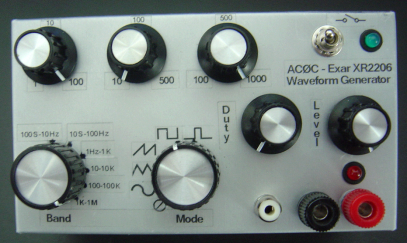
Based on Exar XR2206 chip with a unity gain, high current buffer. Frequency range about 2 minutes to >500Khz. Red LED above the output connector is tied to the square wave tap. Provides a visual indication of speed at low frequencies. Output level is adjustable in all modes from 0-5V. Source/sink capability of the buffer is >500mA although I have termination resistors on the output to protect the op-amp from overload. Properly adjusted the unit should provide <1% THD sine wave levels. Frequency is set based on 1/RC constant which is extremely nonlinear by nature. Based on some analysis of pot resistance value vs. rotation, I’ve split the resistance range into 3 reverse –audio-taper series pots which spreads out the frequency resolution allowing for easy and precise frequency setting. There is some overlap between each of the switched ranges. And each range covers about a 1000:1 total spread. By selecting the switched range and the proper pot, just about any spread of frequencies from 10:1 up to 1000:1 can be covered by a single pot. The triangle, sine and square outputs by the chip are quite wide in range. The function switch serves to select between the various output lines, and provides switching to pads so the end result is similar voltage levels regardless of mode. Labels for the modes were not available, except SINE, and were constructed from lines. Back side connection for power input and signal out – which will feed into a level and frequency meter to be housed separately. Sig gen shown to the left of a variable power supply module. The future DVM multi-meter will set on the left of the signal gen completing the suite. 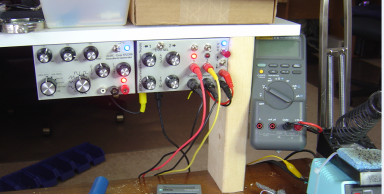
Adjustment pots for fine tuning are accessible from the side. They were originally going to face out the back of the box but a last minute reorientation of the PCB – needed due to the thickness of the PCB and the various tall components on the front side of the board – resulted in the side mount. They are set-and-forget type. I believe I should be able to monitor the levels of the 2nd/3rd harmonics to trim the sine wave output using either a software distortion measuring tool – or by looking at the spectrum analyzer at higher frequencies. Wiring layout is functional but not elegant. A better solution would have been to put another small daughter card on the front panel and wired PTP to a connector on that card. Then use the IDC cable to connect the 2 cards. Unfortunately, I managed to touch one of the buffer chip inputs to +15 and fried it crispy and quick. Ouch. Fortunately, the pinout is generic and another dual opamp is standing duty till I can get this chip replaced. The sig out line on the back is a tap that will run to a future module containing a P-P volt meter and frequency counter avoiding the need to rely o panel markings or hooking up the scope each time. 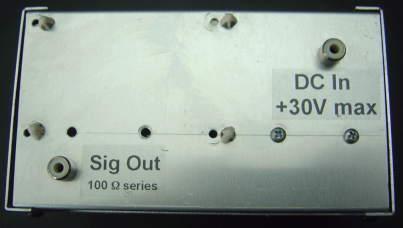 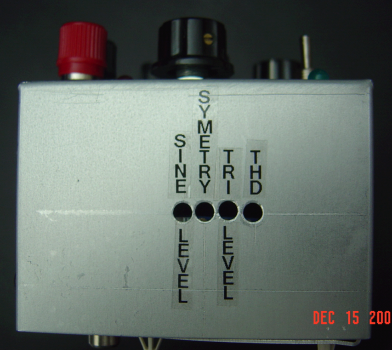
Logic board – XR2206 and buffer chip  Triangle 
Sine 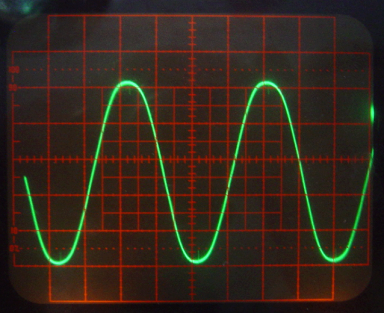 Sawtooth – shape variable with duty cycle control 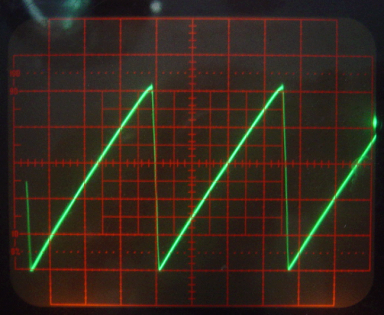 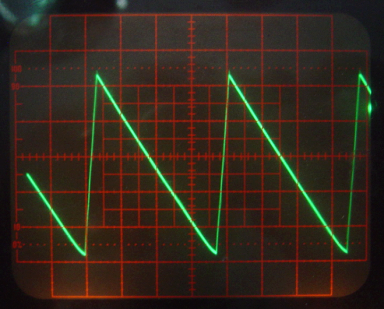
Square  Pulse mode – duty cycle variable from nearly 0 to 100% - here at near 100% 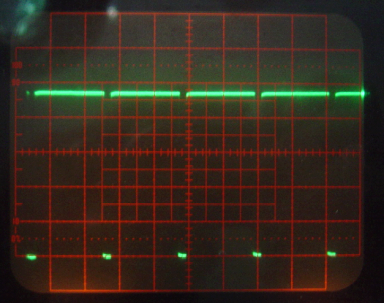 Pulse mode – near 0% 
|